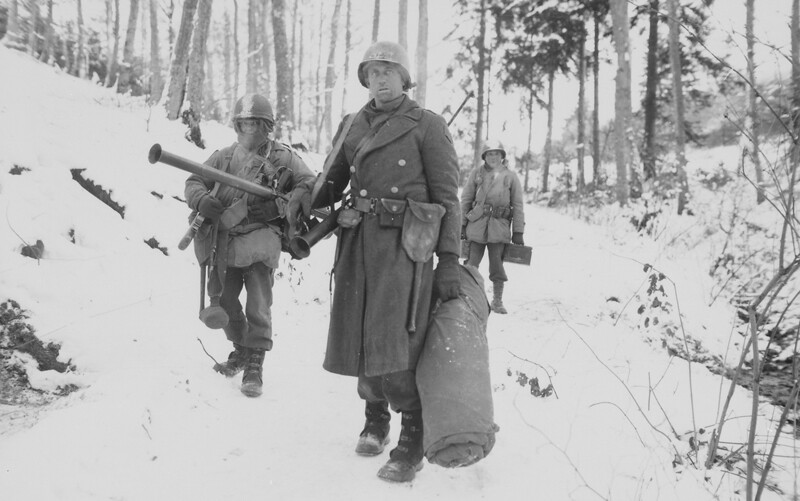This month marks the 75th anniversary of the Battle of the Bulge—one of the most important events of World War II. What follows is a brief account of certain details that show the significance of the Battle of the Bulge.
Did any of your family participate in this battle or in World War II? Record it in your Memories!
Why It’s Called “Battle of the Bulge”
To understand where the word “bulge” comes from, picture a map of Belgium,Luxemburg, and northern France in late 1944, with a vertical battle line drawn down the middle of it. This line was the front, with American and British troops on one side and Germany’s army on the other.
Hitler’s Final Push
On December 16, 1944, Adolf Hitler tried to smash through this line and reconquer Western Europe, just as he had done in 1940, at the beginning of the war. For the first several days of the battle, it looked like he might be successful. The battle line “bulged” westward as the German army advanced in infamous, blitzkrieg style.
The attack happened so quickly that thousands of American soldiers were cut off from the main body of the United States Army. This is what happened in the Belgium city of Bastogne. On the morning of December 22, German soldiers waving white flags approached the American camp there, with a demand that the Americans surrender. The American commander in charge sent the messengers back with a typed response that was only one-word long. “NUTS!” it said.
The German military leaders had a difficult time understanding the message, but the fact that the Americans continued fighting made the meaning fairly obvious. As it turned out, the troops in Bastogne were soon rescued by United States General George S. Patton and his fast-moving 3rd Army.
In the end, the battle line bulged—hence the name—but it never actually broke. American and British soldiers pushed back, and the quest to liberate Europe from Nazi control went on.
What about the Battle Was Unique?
Casualties
For the United States, it was the largest and deadliest battle of the war, resulting in nearly 90,000 casualties. The battle was just as deadly for Germany, however. It was the “decisive struggle that broke the back of the Nazi war machine,” as one historian put it, commenting on the significance of the Battle of the Bulge. The Nazi army spent the remaining five months of the war retreating to Berlin.
Forest of Ardennes and Bad Weather

As movies, photographs, and documentaries show, much of the Battle of the Bulge took place in the Forest of Ardennes, in snow and freezing rain and in arctic-like cold. Many soldiers quickly succumbed to illnesses such as pneumonia and trench foot and had to be evacuated.
The German army, for its part, was counting on the bad weather to help them. Initially it did. Thick cloud cover kept American air support—fighters and bombers and even reconnaissance planes—out of the sky. On Christmas morning, the clouds disappeared, however, and from then on, American war planes were in complete command of the air.
Learn More about Your Ancestors Who Lived through World War II
Were any of your ancestors involved in the Battle of the Bulge? If they were in western Europe from December 1944 to January 1945, then the answer is likely yes! Search our World War II records to learn more about your ancestor’s participation in the war.
It’s not uncommon to know that one of your ancestors participated in an important historical event but not to have any photographs or stories to show for it. If that is the situation you find yourself in, try documenting your ancestor’s experience another way—with stories and photographs that you find on the Internet.
For example, you could collect a few newspaper articles about the Battle of the Bulge and save them as PDFs that you upload to your ancestor’s profile page. You could do the same for photographs and other images you come across.
Even though these items don’t come directly from your ancestor, they will still add color and excitement to his or her story. And did you know that learning about the challenges your ancestor had to face can help you and the other members of your family with the challenges you face? It’s true, so be sure to preserve the memories—even if you have to be creative in how you document them.
Learn More about World War II
At FamilySearch, we care about connecting you with your family, and we provide fun discovery experiences and family history services for free. Why? Because we cherish families and believe that connecting generations can improve our lives now and forever. We are a nonprofit organization sponsored by The Church of Jesus Christ of Latter-day Saints. To learn more about our beliefs, click here.






